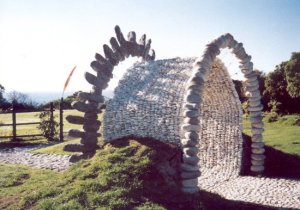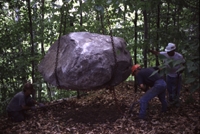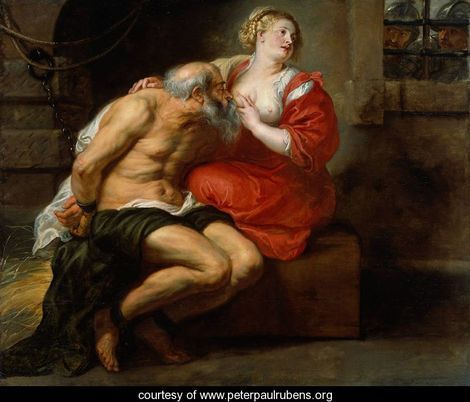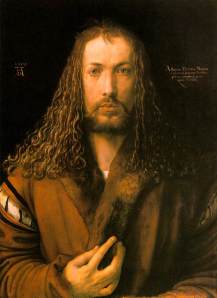Environmental art
My theme for this post is environmental art. Enivronmental art is in a general sense, an art that helps improve our relationship with the natural world. There is no definition set in stone and this living worldwide movement is growing and changing all the time. I especially like Environmental art, because it is short-lived and brings one to enjoy the moment. I also love to be in nature and thereby I find it a beautiful way to create art with whatever the artist finds around himself. And Friday will be Earth Day, whatever that means…isn’t it every day earth day?
Andy Goldworthy was born 1956 and raised in England. He is an extraordinary, innovative British artist whose works with nature produce uniquely personal and intense artwork. Using a seemingly endless range of natural materials—snow, ice, leaves, bark, rock, clay, stones, feathers petals, twigs—he creates outdoor sculptures that manifest a contact with the natural world. Before they disappear, or as they disappear, Goldsworthy records his work in suburb color photographs.

This sculpture which is built out of twigs in water is one of his great short-lived art works. Unfortunately I could either figure out what the name of it is nor when or where it was made. But I still think it is one of his most amazing sculptures made out in nature.
 Rowan Leaves and Hole
Rowan Leaves and Hole
Rowan Leaves and Hole is the title of this beautiful piece, which is colorful and vibrant all made natural. I found a nice citation to this picture from the artist himself: “I’m cautious about using fire. It can become theatrical. I am interested in the heat, not the flames.” I think one can tell in his kind of art. Andy Goldsworthy has nothing theatrical in his art, but still a lot of drama.
 Pebbles broken & scarped
Pebbles broken & scarped
I could not find any more information to the two pictures above as the title. I think they are beautiful and I am actually jealous for the artist that he has such a great job and able to work outside all the time.
For those who got intrigued by Andy Goldworthy; he made a great documantary Rivers & Tides (http://video.google.com/videoplay?docid=-8480463057406057702#). I think his art explains Environmental art the best and without any words.
Chris Booth is on of New Zealand’s leading sculptors and is frequently working around the world. Chris Booth was born in 1948 in Kerikeri New Zealand. Since 1968 he has been very active in the field of art and nature, and in land art where his work is extensively represented in public and private colledtions in New Zealand. Since 1988 his work had been widely exibited and comissioned interationally. Specific Art in Nature Sculpture Parks such as Grizedale, England; Tickon, Denmark; Le Vent des Forets, France and Förderverein Müritz-National Park, Germany represent his works.
 Cave
Cave
The Cave was built from 1994-1997 and is an entranceway to the Kati Kuri marae at Kaikoura in New Zealand. It comprises 5000 white limestone pebbles, collected with community assistance from the coast and woven into a helix. This is an other great example of environmental art, where the artist uses natural materials in a natural setting to build a sculpture. I would love to have this in my entrance area to my house!
 Schist Strata
Schist Strata
Schist Strata was made 1999 and is positioned within the mountain ranges of Central Otago in New Zealand. It celebrates the schist and moraine boulder deposits from the substructure of the land. In comparison with Andy Goldworthy I like that Chris Boothes art is more long lasting than Andy’s.



Iles des Silence, 2001
Iles des Silence are standing in St.Etienne des Gres in Quebec, Canada. They are boulders standing on rocks on boulders. It is impressing how he is able to balance and place the boulders. I like Chris Booth’s art because I can imagine walking through a forest and encountering his art. It must be amazing if you don’t know that it is actually there.
Works Cited:
http://www.oculiartes.org/~cimeracines/art/cb/cb.htm
http://www.chrisbooth.co.nz
http://www.rwc.uc.edu/artcomm/web/w2005_2006/maria_Goldsworthy/TEST/index.html
http://andygoldsworthy.tripod.com/

 Kobina Nyarko is one of Ghana’s premier young contemporary artists. He was born in Takoradi, Ghana in 1972. Most of Nyarko’s works explore the symbolism of fish in paintings that feature numerous tiny fish on often large-scale canvases. This “trademark” theme makes his work easy to recognize. The swirling, mesmerizing schools of fish captivate all of Nyarko’s viewers and collectors.
Kobina Nyarko is one of Ghana’s premier young contemporary artists. He was born in Takoradi, Ghana in 1972. Most of Nyarko’s works explore the symbolism of fish in paintings that feature numerous tiny fish on often large-scale canvases. This “trademark” theme makes his work easy to recognize. The swirling, mesmerizing schools of fish captivate all of Nyarko’s viewers and collectors.



















